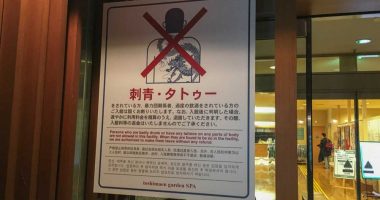The ancient capital of Kyoto is the most popular onward destination for visitors to Tokyo. The details on travel options are below, but the takeaways are:
- Shinkansen (Bullet Train) is the fastest and most convenient way to travel and a no-brainer if you have a Japan Rail Pass
- Buses are the cheapest option and the overnight services are great for those on a budget
- Flights are cheap but the time and cost involved in getting to and from the airports mean that it is rarely the best option.
Shinkansen (新幹線)
Japan’s ever-efficient bullet train is the most convenient and fastest method of transportation from Tokyo to Kyoto. Trains depart from Tokyo Station and Shinagawa Station frequently throughout the day with the first train at 06:00 and the last train at 19:56. Two types of bullet train serve the Tokyo to Kyoto route.
Nozomi (2 hours 20 minutes)
The Nozomi is the fastest bullet train making just three stops (Shinagawa, Shin-Yokohama, Nagoya) before arriving in Kyoto. A single trip ticket costs just over ¥13,000 and unfortunately the Japan Rail Pass is not valid on this particular train.
Hikari (2 hours 45 minutes)
The Hikari is slightly less frequent than the Nozomi departing once every 30 minutes and making several more stops along the route. The cost of an unreserved seat is exactly the same as the Nozomi, but importantly the Japan Rail Pass is valid on the Hikari trains.
See here for the shinkansen timetable.
Plane
While plane is obviously faster than the shinkansen, the time and cost in getting to and from the airport make it a less convenient and ultimately slower travel option.
There are two main airports that serve Kyoto. The closest is Osaka International Airport (Itami; ITM) located just north of Osaka City, about 40 kilometres from Kyoto. This airport mainly serves domestic flights and only the main carriers (e.g. ANA), the low cost carriers use the other airport for the region: Kansai International Airport (KIX). This is an airport built on reclaimed land jutting out into Osaka Bay that is located about 80 kilometres from Kyoto.
Despite the cheap flights offered by the low cost carriers such as Vanilla Air, Peach, and Jetstar—some costing as little as ¥8,000 return—once you’ve factored in the cost of getting to and from airports (especially because the low cost carriers to Kyoto depart from Narita Airport), the total cost becomes comparable to the shinkansen but involves a lot more hassle. A one-way ticket from Tokyo Station to Narita Airport is ¥3,020 and Kansai International Airport to Kyoto costs ¥2,500 by bus and ¥3,500 via the JR Haruka Airport Express (both take about 90 minutes). The flight time itself is 1 hour 45 minutes.
Bus
Bus or coach travel in Japan is comfortable, clean, and cheap—a far cry from the stereotypical image of cramped seats and noisy cabins. The two main operators running buses from Tokyo to Kyoto are Willer and Kanto Bus Co., Ltd. The journey by road is over 8 hours and so many opt for to for the night bus which arrives in Kyoto around 6am. Prices fluctuate with season but typically costs start from around ¥7,500. The day buses (Willer only) are a little cheaper with prices starting from ¥5,500 and journey times are extended by about an hour due to traffic.



